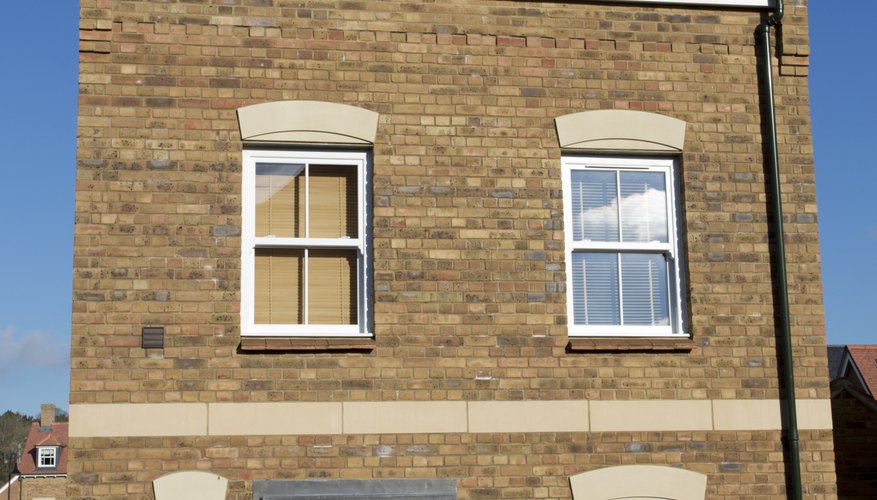Dormers are structural elements added to the roof of a house that provide more light, ventilation and extra space to the tallest story of the structure. There are three main types of dormers: gable-fronted dormers that rise to a peak, shed dormers whose roof pitches at a less steep angle than the rest of the roof, and blind dormers that are attached to the roof for exterior aesthetics without adding light or space inside.
Planning and approval
Decide where the dormer will be located on the home and what style you prefer. Gable-fronted dormers are more expensive to install as they require more roofing supplies. Shed dormers must have the proper roofline to avoid interior leakage and are generally installed along the back or side of a house because they are less visually appealing. Blind dormer frames can be purchased pre-assembled, but must be properly secured to the roof and sided or painted to match the house. Once you have decided on a style, buy dormer plans from a home-supply shop and create a proposal to present to the local planning department. The proposal should include the plans, the purpose of the dormer, the materials that will be used, the anticipated cost of the project and the names of the builders assisting in the construction.
- Decide where the dormer will be located on the home and what style you prefer.
- Shed dormers must have the proper roofline to avoid interior leakage and are generally installed along the back or side of a house because they are less visually appealing.
Materials needed
The dormer frame will be constructed of two by four beams, rafter beams and other wooden support beams. The proper type and number of beams is described in the specific dormer plans you are using. Measure the beams and the angles for the framing using a level and tape measure. To cut the beams, you will need a sturdy table saw that is able to cut non-right angles. The dormer frame must be attached to the existing roof frame using screws, bolts and support beams. Roofing and weatherproofing materials will be used to keep the dormer from leaking. Roof tiles, roofing nails, felt paper, sealant and flashing is needed to keep the dormer watertight. The interior of the dormer will also need to be finished with insulation and plasterboard. Regardless of the interior treatment being used, prime the walls of the dormer before painting or wallpapering to add an extra protection barrier. A window will also be used to add ventilation and light. Make sure the dormer plans can hold the window's weight without buckling or warping.
- The dormer frame will be constructed of two by four beams, rafter beams and other wooden support beams.
- The dormer frame must be attached to the existing roof frame using screws, bolts and support beams.
Installation
Measure the size and location of the dormer from both the interior and exterior of the roof. Remove the shingles, weatherproofing, plywood boards and insulation from the construction area. Cut the beams to the angles and lengths described in the dormer plans before attaching them to the roof frame. Begin with the vertical face of the dormer parallel to the front of the house before attaching the sides of the dormer. Finish the dormer framework along its roof. This ensures that the weight of the dormer is fully supported. Once the frame is completely integrated into the existing roof frame, add the weatherproofing materials, plywood covering, shingles and siding to finish the external structure of the dormer. Install the window in the frame of the dormer, then place the internal insulation and plasterboard before priming the internal area.
- Measure the size and location of the dormer from both the interior and exterior of the roof.
- Install the window in the frame of the dormer, then place the internal insulation and plasterboard before priming the internal area.
